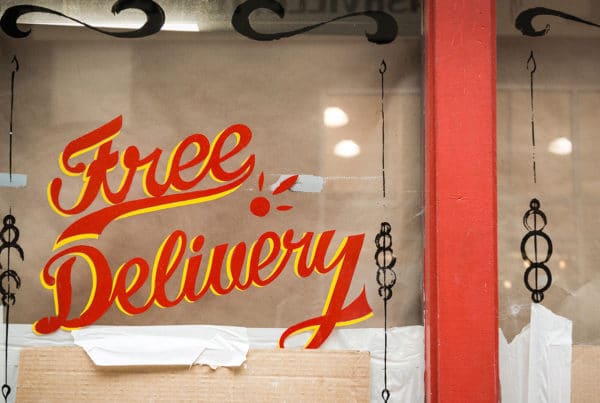Summary
E-commerce merchants often struggle with fragmented shipping tools that slow down fulfillment, cause errors, and frustrate customers. This guide breaks down the must-have and advanced e-commerce shipping tools that help streamline operations, improve customer experience, and build a connected shipping stack fit for growth. Whether you’re shipping 5 or 500 parcels a day, these tools turn logistics into a competitive advantage.
Every missed delivery, delayed refund, or “Where is my order?” ticket has a cost — and for most merchants, it adds up fast.
Too often, the problem isn’t your product, it’s your shipping tools setup. You’re bouncing between carrier portals, managing returns in spreadsheets, and chasing claims by email. It’s slow, manual, and hard to keep up with, all while customers expect speed, visibility, and a branded experience.
But here’s the shift: shipping isn’t just an operational task anymore. It’s part of the customer experience. And with the right tools, you can reduce errors, work more efficiently, and deliver the kind of service that keeps people coming back.
In this guide, we’ll break down the shipping tools that matter most:
- The essentials every merchant needs to get started
- The next steps for merchants handling higher order volumes
- And the advanced features that help you stay in control as your business grows
What are e-commerce shipping tools (and why do they matter so much)?
E-commerce shipping tools are software features and resources that help merchants manage the full logistics flow: label generation, carrier selection, compliance, tracking, returns, and analytics.
In an environment where customers expect same-day updates and international delivery is the norm, the right tools make or break your logistics. A well-chosen tool stack helps you:
- Save time and reduce errors with automation.
- Stay compliant with customs and shipping regulations.
- Deliver better customer experiences through branded tracking and hassle-free returns.
- Grow without chaos by connecting your entire shipping flow in one stack.
Of course, shipping doesn’t exist in a vacuum, you’ll also rely on tools like your shop system, review platforms, support inbox, and payment platform to keep things moving. But when it comes to what directly shapes your delivery experience, the tools we’ve listed below are where it counts most.
Must-have shipping tools for every merchant (the essentials)
Even small shops need a solid shipping foundation . These are the basics, but they’re far from “nice-to-haves.” Whether you’re just starting or processing a few dozen orders a day, these tools help you avoid common shipping mistakes and deliver a smoother experience from the first click to the customer’s door.
1. Shipping label template
With shipping label tools you can create and print shipping labels in seconds, without logging into multiple carrier portals. Templates speed up fulfillment and reduce the risk of manual errors, especially when you’re dealing with more than a handful of orders per day. A shipping label template tool lets you print all labels in one go, directly from your shop backend.
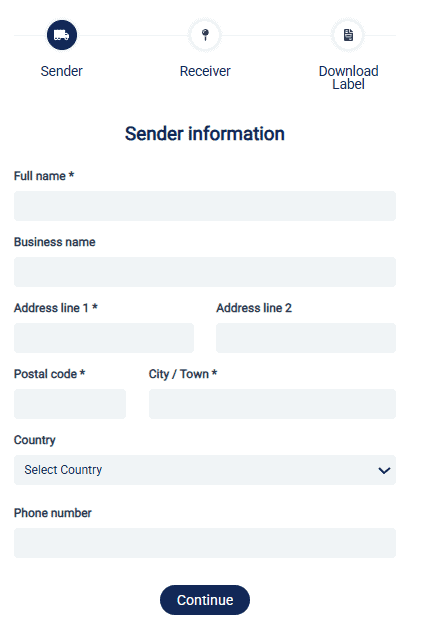
💡Why it matters: The faster you fulfill, the faster you deliver. Label templates cut out repetitive steps and help you stay on top of orders, especially when time and staffing are limited.
2. Return policy generator & return portal
A clear, compliant return policy is the first step. But giving customers a self-service return portal makes the process smoother for both sides. Imagine: A customer emails you asking how to return an item, but you don’t have a clear process in place. You scramble to write a response, check your policy, and manually track the return. With a self-service portal, this would have taken zero time.
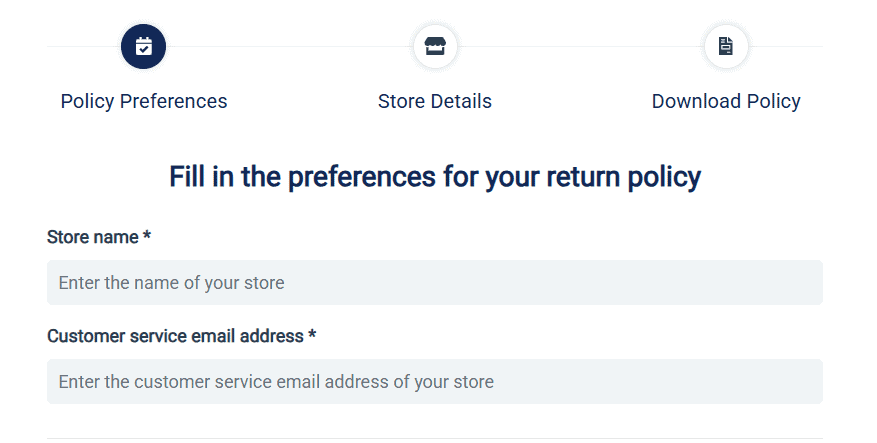
3. Custom form generator & HS code finder
You’re preparing an international shipment and realize you need a CN22 or Commercial Invoice — fast. On top of that, you’re unsure which HS code to use for the new product you just added. Instead of Googling codes or filling out forms manually, you use the customs form generator to instantly create compliant documents, while the HS code finder auto-fills the correct classification.
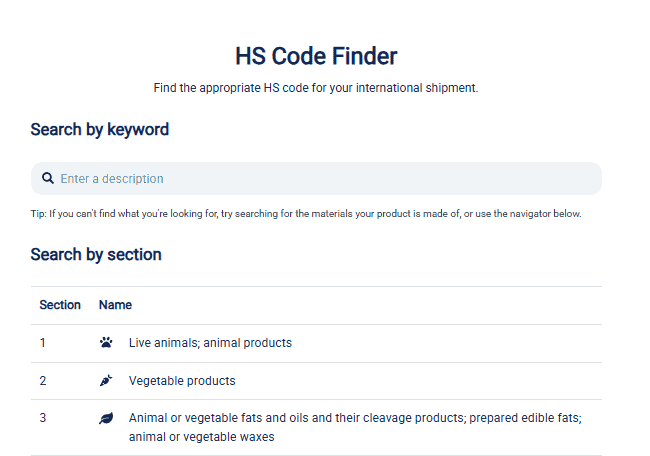
💡Why it matters: Cross-border shipping is one of the most error-prone steps in e-commerce logistics. Automating customs paperwork and product codes not only reduces delays and fines but also helps merchants expand internationally without needing in-house compliance expertise.
4. Branded packaging tools
Your packaging is the first real-life brand touchpoint. At some point, you’ve outgrown plain mailers and want your packaging to reflect your brand, but you can’t yet afford 1,000 boxes upfront.
Tools like Sendcloud Shop let you order branded, eco-friendly packaging in small quantities, no need for warehouse space or huge upfront costs!
💡Why it matters: A great unboxing experience drives repeat purchases and looks professional from the very first shipment.
Growth tools for scaling merchants
As order volume increases, small inefficiencies start to snowball — from packing delays to delivery mistakes. The following tools help growing merchants stay efficient, reduce pressure on their teams, and deliver a smoother customer experience without hiring a full logistics staff.
5. Pick & pack automation
You’re getting 50+ orders per day and your team is still manually picking items off shelves using printed slips. The outcome: slow packing and the occasional wrong item. Sounds familiar?
With a scanner-based packing workflow, you can scan items, automate workflows, and batch print labels from a single queue.
💡Why it matters: Faster packing and fewer mistakes lead to lower return rates, happier customers, and more efficient teams, without needing a full warehouse management system.
6. Shipping rules & automation
Every manual shipping decision, which carrier to use, whether to add insurance, how to handle international orders, adds up. Automation tools let you pre-define smart rules based on order value, weight, destination, or delivery method.
For example: automatically send high-value items with a tracked service or use local carriers for domestic shipments.
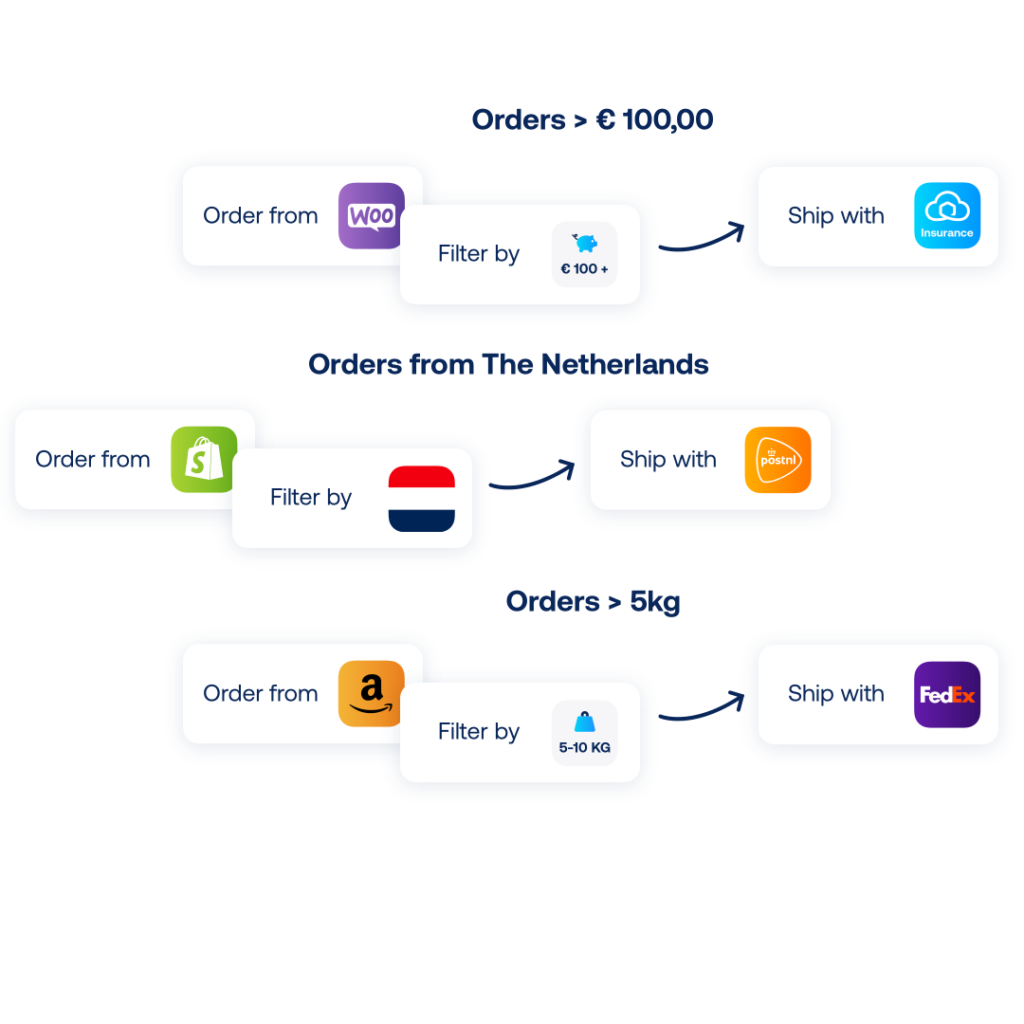
7. Tracking tools & post-purchase communication
A customer places an order and expects to be kept in the loop, but your current setup only sends a basic carrier email. Branded tracking pages and proactive SMS, WhatsApp or email updates keep customers informed, lower WISMO tickets, and reinforce your brand after purchase.

Want to compare the top options? Check out our shipment tracking software comparison guide to see what features matter most.
8. Delivery issue management
A parcel goes missing and your support team spends 3 days chasing the carrier for answers. With a delivery issue software, claims are filed instantly, refunds tracked automatically, and the customer kept informed.
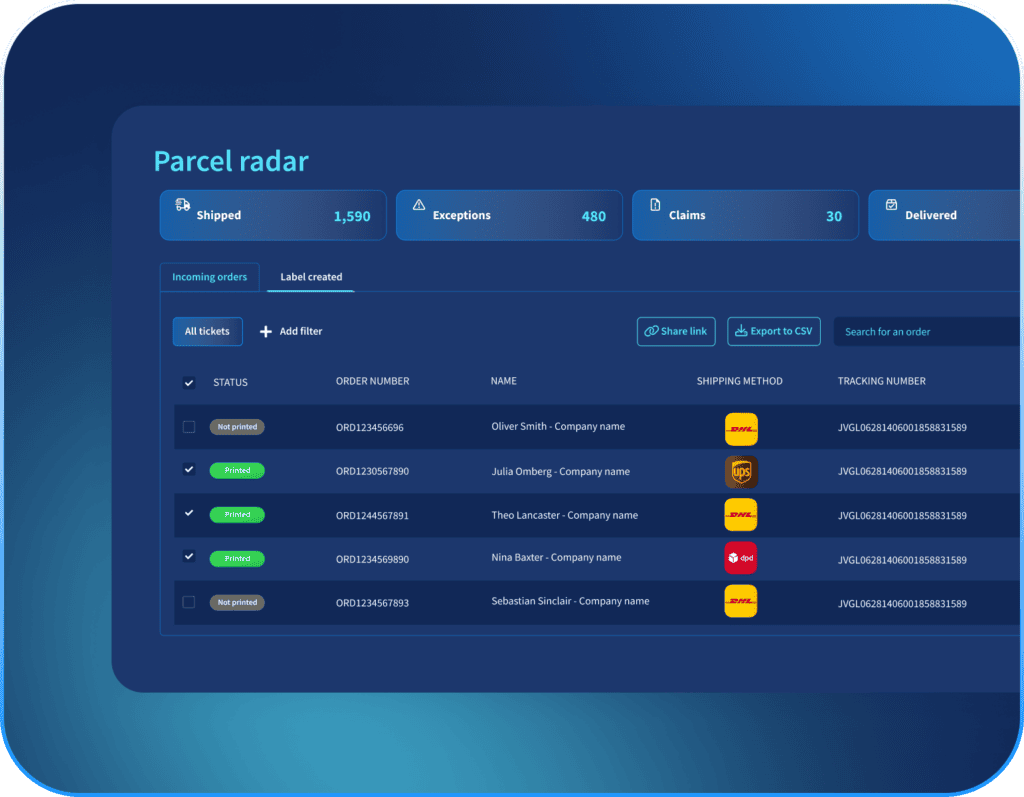
💡Why it matters: Carrier issues are the #1 time drain for support teams. Automating claims cuts resolution time and holds carriers accountable! The faster you resolve delivery issues, the more likely customers will come back — even after something went wrong.
9. Multi-channel integrations
You sell on Shopify, Amazon, and your own WooCommerce store. But right now, each platform feeds into a different shipping flow. Integrating them into one system gives you a single dashboard for all orders — with unified carrier rules and tracking.
💡Why it matters: Without multi-channel syncing, fulfillment gets messy fast. Integration is the difference between running a store and running a business. Because selling on more channels should grow your revenue, not your admin burden.
Optimization tools
Once the basics are under control and volume grows, the next challenge is managing complexity and making better decisions with your shipping data. The tools give you more control, more visibility, and fewer hidden costs.
10. Shipping Analytics
When you’re using multiple carriers, rates and performance can vary dramatically. Shipping analytic tools pull together data on delivery speed, carrier reliability, shipping costs, and refunds, giving you full visibility into what’s working and where things go wrong. Instead of reacting to complaints, you can spot issues early and take action.
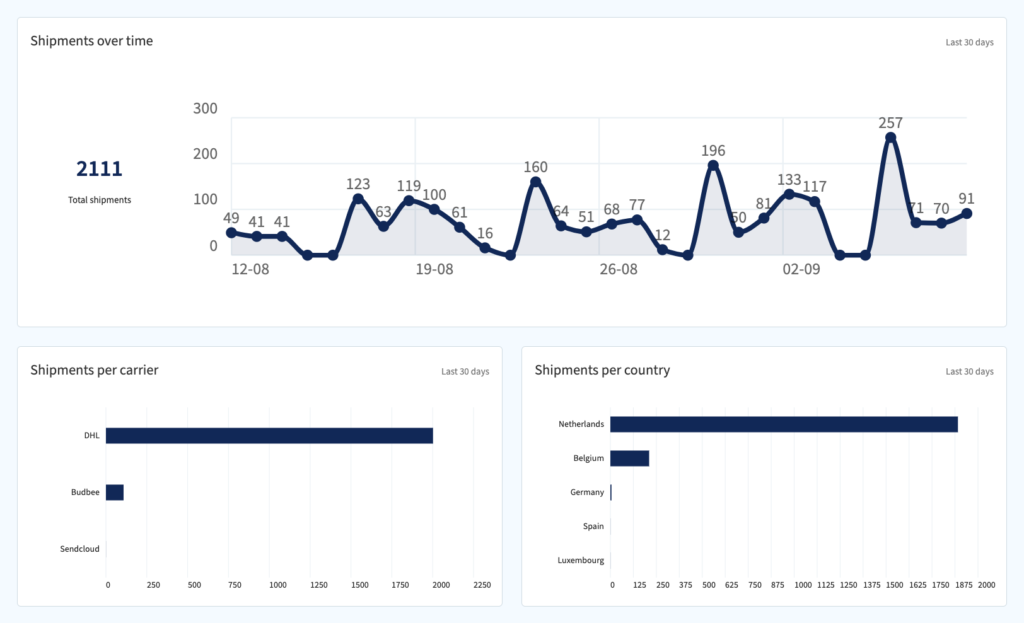
Want to compare solutions? Our shipping analytics software comparison guide breaks down what to look for in a data-driven tool.
11. Shipping opportunity center (AI suggestions)
Most shipping setups evolve reactively. While reporting shows you what’s happening, AI suggestions go a step further: recommending what to do next. AI-powered tools continuously scan your data for patterns and recommend improvements. That might mean switching carriers in certain zones, adjusting shipping rules, or catching unnecessary surcharges to save money, improve delivery speed, or optimize your setup.
💡Why it matters: It’s like having a logistics analyst on your team without needing to hire one. AI helps you see what you’ve been missing, not just what’s already gone wrong.
Curious how AI is changing logistics? Explore our logistics intelligence software comparison guide to see which features help merchants make smarter decisions.
12. Carrier invoice checks
If you don’t check your carrier invoices, you’re probably paying too much — and don’t even know it. When shipping hundreds of parcels a week, even small billing discrepancies add up. Invoice checking tools compare what you were charged against what you actually shipped, flagging overcharges or service failures automatically.
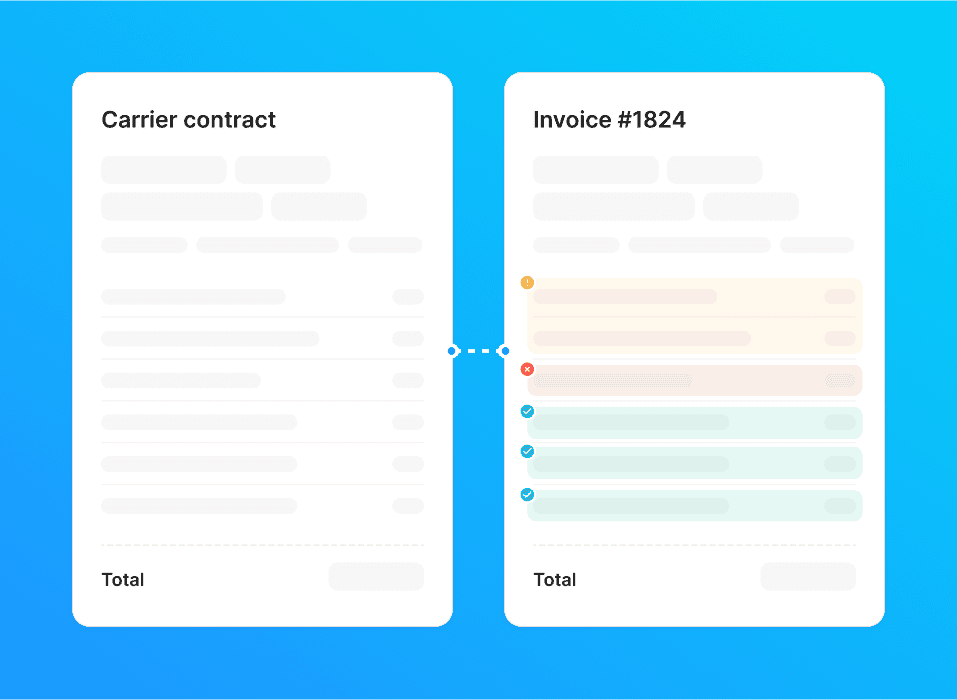
💡Why it matters: Manual invoice audits are slow and easy to overlook. Automating this protects your margins and gives you leverage in carrier negotiations.
Looking for the right audit tool? This parcel audit software comparison guide highlights the top options for invoice accuracy and cost recovery.
13. Returns analytics
You’re handling returns well, but do you know why customers are sending items back? Returns analytics break down patterns by product, region, or customer segment. That data helps you improve product descriptions, sizing, and quality control.
💡Why it matters: Returns are more than a cost — they’re feedback. Understanding them reduces repeat issues and improves conversion.
The missing piece: Connecting your shipping tools

Most merchants don’t start with a plan, they start with a patchwork. One tool for labels, another for returns, a third for tracking. It works, until it doesn’t.
Disjointed tools mean disconnected data, duplicated effort, and inconsistent customer experiences. Your team spends more time managing systems than managing shipments.
The solution? A connected shipping stack. One that brings everything, from checkout preferences to carrier selection, branded tracking, returns, and claims, into a single flow.
The benefits of connecting your stack:
- From label to doorstep: See what’s happening with every order
- Let automation do the heavy lifting across tools, not just in one
- Keep your brand experience consistent, even after the checkout
- Stop juggling tabs and start focusing on customers
- Grow into new markets without needing a bigger team
Merchants don’t outgrow tools. They outgrow tool silos. If you’re spending more time coordinating your shipping tools than using them, it’s time for a different approach. Sendcloud brings all these capabilities together in one place — without the complexity.
Conclusion: Efficiency + experience = staying competitive
Great shipping doesn’t just move parcels, it moves the customer experience forward, from purchase to post-delivery. With a connected shipping tool stack you build trust, manage costs, and deliver a customer experience that brings people back.
Whether you’re just starting or running hundreds of orders a day, your stack should work with you — not against you.
From the essentials to advanced tools, and from one-off solutions to a fully connected shipping platform, the tools you choose will shape your customer journey and your bottom line.
Ready to upgrade your shipping stack? Start your free Sendcloud trial or book a demo to see it in action.







